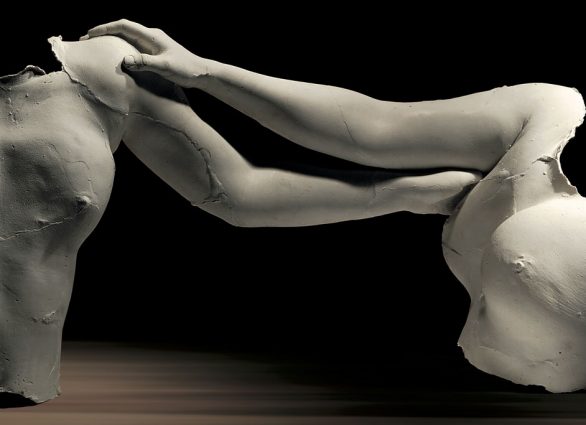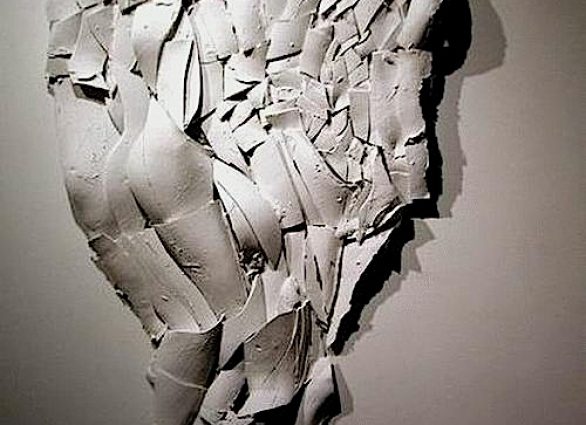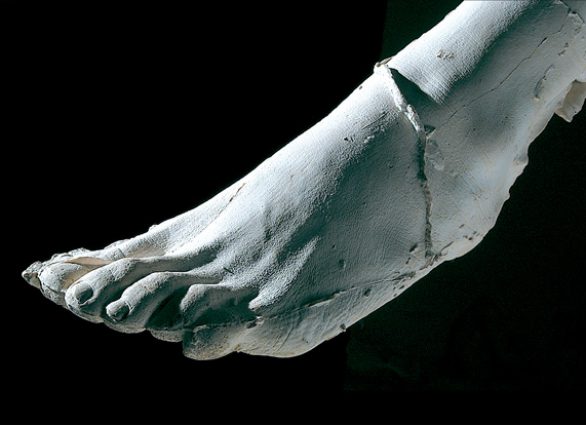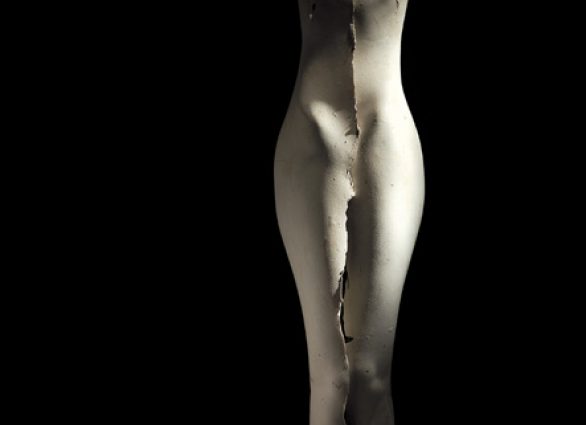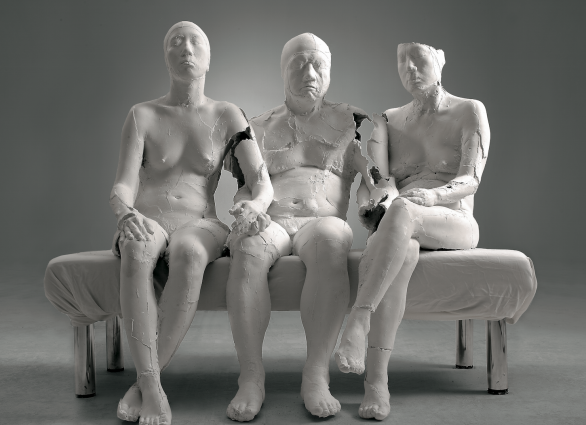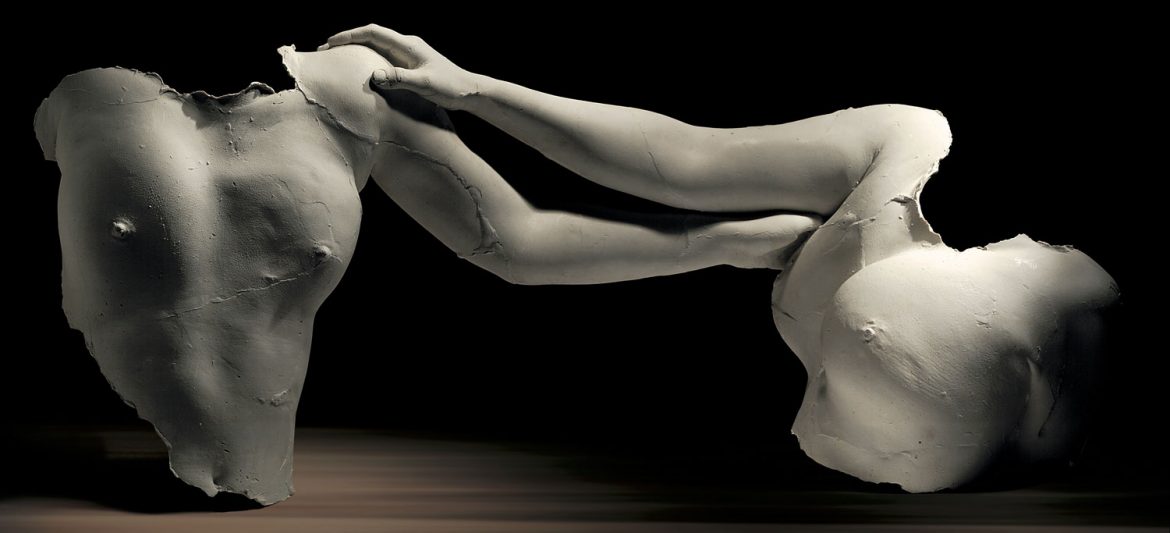
il-yong Kim exhibiting his work for the first time in the UK Encounters in May 2015.
il-yong Kim is a Korean artist who has specialised in life-casting, which he describes this way: “unlike like the general casting technique of applying plaster on a mold made of clay, lifecasting applies plaster directly to body parts. A plaster mold in lifecasting plays the role of film in photography. Compared to the molding of inanimate objects like a death mask, lifecasting can be applied to the whole body including its front, profile, and even the ears.
According to the literature, lifecasting dates back to ancient Egypt, but its techniques were unknown. In the Encyclopedia of Sculpture Techniques, John Mills defines lifecasting as ‘casting from life’. While the term ‘death mask’ is widely known through examples such as the death mask of Beethoven, the term ‘lifecasting’ still remains unfamiliar to sculptures, but was often used in George Segal’s work.
George Segal’s lifecasts used plaster bandages to represent an ordinary man in his surroundings. He chose ordinary models whose bodies implied their life experience. “This is why I decided to select ordinary models, not good-looking people. I cannot change their habitual ways of moving, when they sit or stand. My work is damaged the moment I ask them to pose.” He used plaster when casting a clothed man, or applied color after casting. As seen in his Portrait of Susie Evan (1965~1972), his lifecast, modeled directly from the nude, displays a delicate aspect of human consciousness. However, his works appear imprecise and indirect because he used plaster bandages.
My lifecasting work differs from his in that I try to portray human consciousness delicately through the casting of the human body. While George Segal employed lifecasting techniques using plaster bandages, I adopt a more direct technique to cast the human consciousness recorded on the body. I see the body as the cradle of life or an object revealing the cycle of life rather than an object of sexual desire.
The Cradle, done in 1995, was a departure point from clay casting to lifecasting. I intended to represent the breath of life imprinted on the palm lines and the thumb in my works after 1996. Since 1999 my casts have expanded to the whole body. As seen in Being without Existence in 1999, details can be realistically represented and the delicate human consciousness imprinted on the body can be displayed without distortion because I cast body parts only with plaster. Plaster is directly applied to the body in lifecasting. A novice model may feel some discomfort because heat and contraction occur as the plaster hardens. Because the model’s body hair may be pulled out during the process of removing the mold, the practitioner’s dexterity and skill is required. As plaster is directly applied to the body in lifecasting, the time to make a finished cast is shortened. Lifecasting can be seen as a more developed, deepened technique of general casting techniques.
Described below are lifecasting techniques I acquired through my experience. I provide this information to help viewers understand lifecasting work, considering that the sculpture world is suffering a lack of information.
The woman in modern times stands at the centre of the World possessing an equal status, opposing any aspect of male dominating society. Oriental concepts such as yin and yang put woman in the midst of the flow of nature and life.
‘Torture’ fuels a basic instinct of modern art to achieve utmost creativity. By visualizing shit, blood, stink and noise art gives viewers a raft of feelings that are new and creative.
My models have, in a way, been tortured. The process of my work, which requires that a model stays nude and wrapt in cold-water plaster demands that she is extremely patient. By using this process I became aware that ‘tolerance’ has been one of key characteristics of femininity. The chemical reaction as the plaster solidifies may cause suffering to the model’s skin and nerves, inflicting heat and pressure. A model experiencing this process can feel aspects of masochism while the artist may tend to become sadistic. A plaster cast of the female nude is the life space of womb and pelvis, which has been the main subject of my work.”

